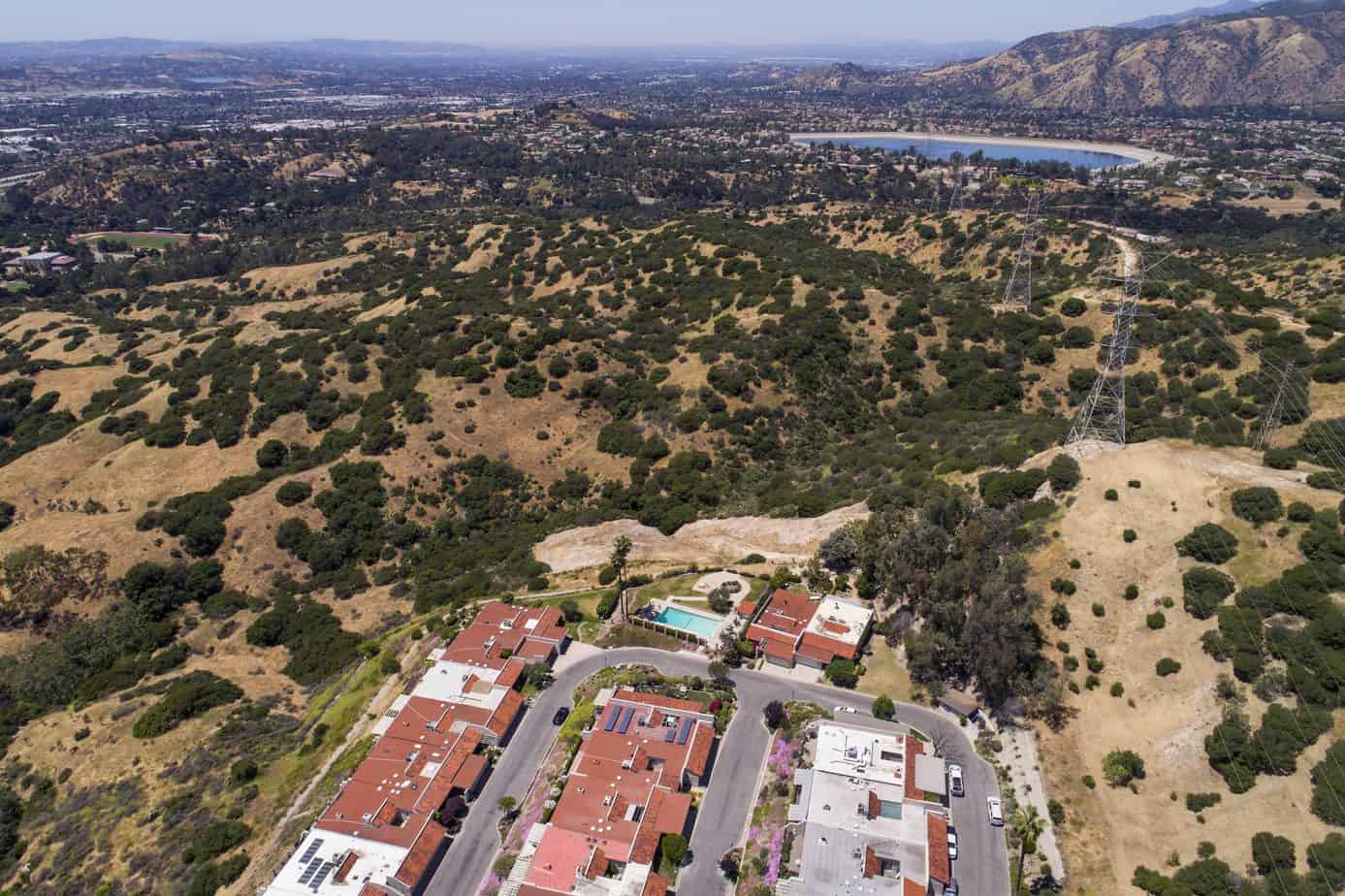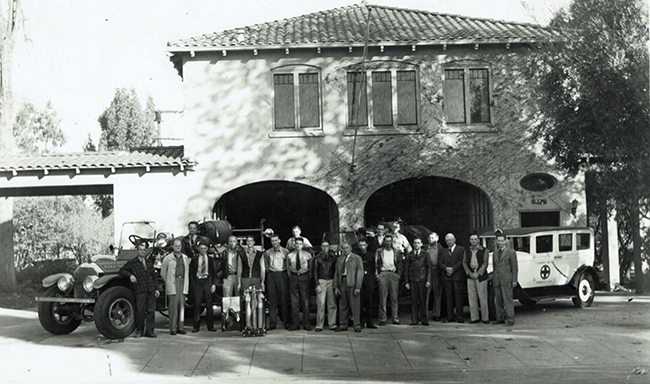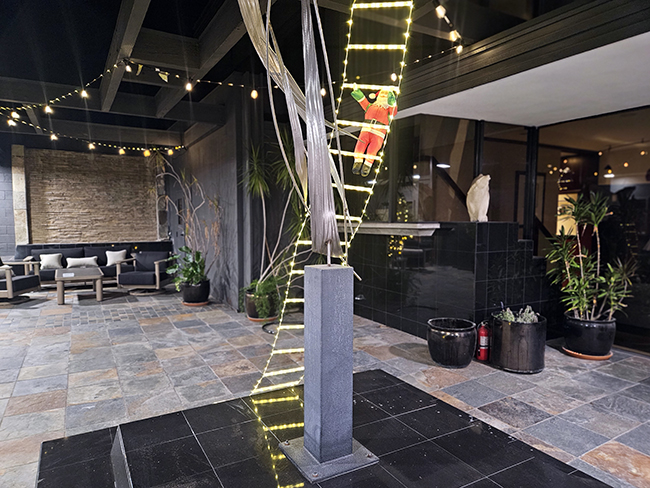UPDATED: Residents skeptical over new hillside development

Residents got their first look at a new housing development that would change the face of the Webb Canyon hillside.
The Clara Oaks project was unveiled to a packed crowd in the Padua Room at the Alexander Hughes Center Monday evening, as representatives talked about the plans and fielded questions from the skeptical crowd.
See the video of the meeting and property
Clara Oaks is a proposed 47 single-family home development with an emphasis on making as little of an impact on the hillsides as possible, according to Steve 
Director of Community Development Brian Desatnik explained that the development is still in its early stages. The specific plan and environmental impact report still have to be created, and the plans will then have to be reviewed by the city’s commissions and the city council.
In all, it could take up to two years for the plans to make it to the review process.
“This is really the first step in the process,” Mr. Desatnik said. “The plans have not been formally submitted to the city.”
Mr. Desatnik gave a quick overview of the history of hillside regulation and the mechanism that governs development. Due to increased concern over hillside development in the 1970s, the city created an element of the general plan noting that development of the hillsides is allowed only if it is done with extreme care, in a manner compatible with the environment and safe from hazards such as fire, erosion and flooding.
A city ordinance was also passed in 1981 containing four provisions—2,600 of the 3,000 acres of hillsides between Webb Canyon Road and the San Bernardino County Line would be preserved as permanent open space; a focus would be made for development on areas with the mildest slope; and preserving large tracts of open space while protecting the rights of property owners to gain some economic benefit from their land, Mr. Desatnik explained.
Mr. Austin noted that Clara Oaks meets those provisions and then some.
“We’re not only proposing to follow the general plan, but to exceed it,” he said.
The reason, Mr. Austin said, is the attention to the topography of the land. The homes would be specifically designed and built around the nature of the hillside, and that means no leveling of the ground or lobbing off a hilltop, he added.
Instead of a sidewalk, a decomposed granite trail would be installed on the left side of the streets. There would be no streetlights, and permeable pavements would be installed that will allow storm water to seep into the ground.
The investors behind the development are mostly from Canada, and have experiences in more urban settings, as opposed to quiet residential neighborhoods. According to the Clara Oaks website, lead designer James Hancock has been touted as “one of Canada’s great masters of high-rise city building” and has served terms as both member and chair of the city of Vancouver’s Design Panel.
Randy Lim, the project developer, also has a background in high-rise developments. He was listed as a North American representative for TeamRise, a Chinese development company that initially announced plans to build two 20-plus story residential towers in central Seattle, according to a 2014 article in the Puget Sound Business Journal. TeamRise has a satellite office in Pasadena.
In October 2016, the Seattle plan reverted to just one 24-story tower in order to preserve an older apartment building built in 1918, which was nominated for historical preservation in 2015, the Seattle Daily Journal of Commerce reported.
Mr. Hancock is also involved in the design of the Seattle project, according to a 2014 article in the same publication.
The home design sample presented by Mr. Hancock looked decidedly modern—Mr. Hancock called it an “international style”—with solar panels on the roof, a terraced patio with a pool and ample windows around the dwelling. Mr. Hancock noted the homes would have garages oriented away from the street, usage of natural materials in order to “blend in” with the landscape and an integration of indoor and outdoor spaces.
Each custom home would be roughly 2,500 to 4,000 square feet, according to Tyler Kropf, a Newport Beach-based realtor representing the developers. Seven lots would be a fourth of an acre, 11 lots would be a third of an acre, 11 lots would be one to two acres and four lots would be greater than two acres.
Clara Oaks has also proposed a roughly two-mile loop trail that would be installed on the top right part of the parcel, encompassing roughly 52 acres of the 98-acre plot of land. A public parking lot would be installed on the bottom left of the property for those who would want to enjoy the trail, Mr. Austin said.
This was one of the amenities that residents in attendance took issue with, with some expressing concern that the proposed hiking trails would increase traffic in the area and may also lead to an uptick in property crimes.
Mr. Austin explained that the developers had met with the Claremont Wildlands Conservancy (CWC) and they had approved of the plan for the trails.
“I do understand that it will bring more cars,” Mr. Austin said. “And my understanding is the conservancy feels like this area will be different that the other areas because it is smaller.”
Lissa Petersen of the CWC noted the development group is going beyond what is required by the city.
“We have talked to the developer and worked with the developer on this project and we think this is the best solution we’re going to get, considering the need to accommodate the hillside ordinance that Brian Desatnik explained earlier,” she said.
Other areas of concern include the risk of a fire, impact on wildlife, drainage and flood control and the impact of the development on the Base Line Road corridor.
To mitigate the risk of fire, Mr. Austin said, a 250,000-gallon water tank would be installed at the north end of the development. He noted that the size of the tank is roughly the same as the tank used for the larger Claraboya neighborhood.
Mr. Kropf noted that the purpose of the meeting was not about hammering out the details, but presenting preliminary plans to residents.
“This is very early on,” he said. “We’re here to gain your support, share our ideas and do it in what we think is the proper way. Obviously this community cares. We don’t get this even in large cities.”
—Matthew Bramlett
news@claremont-courier.com










0 Comments